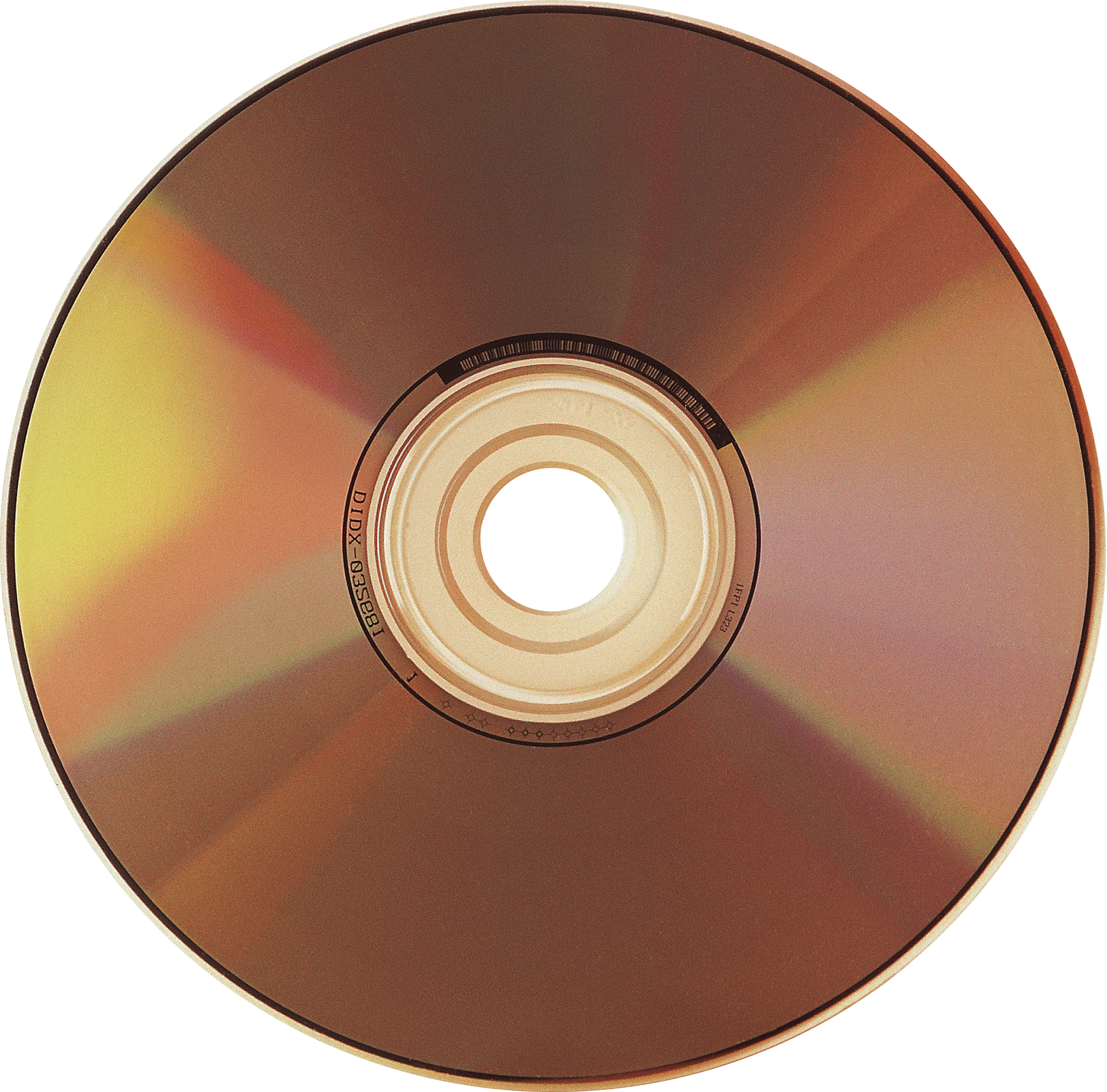
This image has format transparent PNG with resolution 2370x2338.
You can download this image in best resolution from this page and use it for design and web design.
Compact Cd, DVD disk PNG image with transparent background you can download for free, just click on download button.
The compact disc (CD) is a digital optical disc data storage format that was co-developed by Philips and Sony to store and play digital audio recordings. It was released in 1982 branded as Digital Audio Compact Disc.
The format was later adapted for storage of data (CD-ROM). Several other formats were further derived from these, including write-once audio and data storage (CD-R), rewritable media (CD-RW), Video CD (VCD), Super Video CD (SVCD), Photo CD, Picture CD, Compact Disc-Interactive (CD-i), and Enhanced Music CD.
Standard CDs have a diameter of 120 millimetres (4.7 in) and are designed to hold up to 74 minutes of uncompressed stereo digital audio or about 650 MiB of data. Capacity is routinely extended to 80 minutes and 700 MiB by arranging more data closely on the same sized disc. The Mini CD has various diameters ranging from 60 to 80 millimetres (2.4 to 3.1 in); they are sometimes used for CD singles, storing up to 24 minutes of audio, or delivering device drivers.
At the time of the technology's introduction in 1982, a CD could store much more data than a personal computer hard disk drive, which would typically hold 10 MB. By 2010, hard drives commonly offered as much storage space as a thousand CDs, while their prices had plummeted to commodity level. In 2004, worldwide sales of audio CDs, CD-ROMs, and CD-Rs reached about 30 billion discs. By 2007, 200 billion CDs had been sold worldwide.
A CD is made from 1.2-millimetre (0.047 in) thick, polycarbonate plastic and weighs 14–33 grams. From the center outward, components are: the center spindle hole (15 mm), the first-transition area (clamping ring), the clamping area (stacking ring), the second-transition area (mirror band), the program (data) area, and the rim. The inner program area occupies a radius from 25 to 58 mm.
A thin layer of aluminum or, more rarely, gold is applied to the surface, making it reflective. The metal is protected by a film of lacquer normally spin coated directly on the reflective layer. The label is printed on the lacquer layer, usually by screen printing or offset printing.
CD data is represented as tiny indentations known as pits, encoded in a spiral track moulded into the top of the polycarbonate layer. The areas between pits are known as lands. Each pit is approximately 100 nm deep by 500 nm wide, and varies from 850 nm to 3.5 µm in length. The distance between the tracks (the pitch) is 1.6 µm.
When playing an audio CD, a motor within the CD player spins the disc to a scanning velocity of 1.2–1.4 m/s (constant linear velocity, CLV)—equivalent to approximately 500 RPM at the inside of the disc, and approximately 200 RPM at the outside edge. The track on the CD begins at the inside and spirals outward so a disc played from beginning to end slows its rotation rate during playback.
The program area is 86.05 cm2 and the length of the recordable spiral is 86.05 cm2 / 1.6 µm = 5.38 km. With a scanning speed of 1.2 m/s, the playing time is 74 minutes, or 650 MiB of data on a CD-ROM. A disc with data packed slightly more densely is tolerated by most players (though some old ones fail). Using a linear velocity of 1.2 m/s and a narrower track pitch of 1.5 µm increases the playing time to 80 minutes, and data capacity to 700 MiB.
The digital data on a CD begins at the center of the disc and proceeds toward the edge, which allows adaptation to the different size formats available. Standard CDs are available in two sizes. By far, the most common is 120 millimetres (4.7 in) in diameter, with a 74- or 80-minute audio capacity and a 650 or 700 MiB (737,280,000-byte) data capacity. Discs are 1.2 mm thick, with a 15 mm center hole. The official Philips history says this capacity was specified by Sony executive Norio Ohga to be able to contain the entirety of Beethoven's Ninth Symphony on one disc. This is a myth according to Kees Immink, as the EFM code format had not yet been decided in December 1979, when the decision to adopt the 120 mm was made. The adoption of EFM in June 1980 allowed 30 percent more playing time that would have resulted in 97 minutes for 120 mm diameter or 74 minutes for a disc as small as 100 mm. Instead, however, the information density was lowered by 30 percent to keep the playing time at 74 minutes. The 120 mm diameter has been adopted by subsequent formats, including Super Audio CD, DVD, HD DVD, and Blu-ray Disc. The 80-mm-diameter discs ("Mini CDs") can hold up to 24 minutes of music or 210 MiB.
In this gallery you can download free PNG image: Compact disk PNG image, CD, DVD png image free download